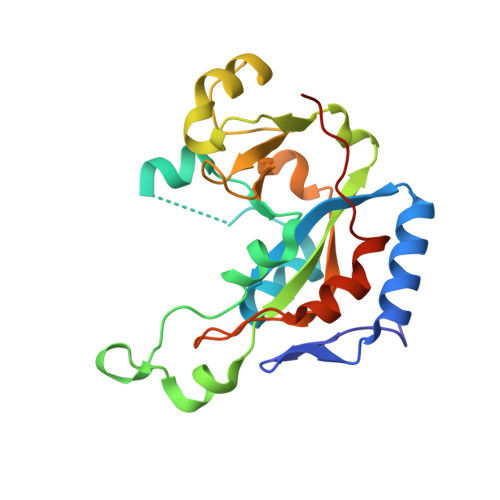Cholix Toxin, a Novel ADP-ribosylating Factor from Vibrio cholerae.
Jorgensen, R., Purdy, A.E., Fieldhouse, R.J., Kimber, M.S., Bartlett, D.H., Merrill, A.R.(2008) J Biol Chem 283: 10671-10678
- PubMed: 18276581
- DOI: https://doi.org/10.1074/jbc.M710008200
- Primary Citation of Related Structures:
2Q5T, 2Q6M - PubMed Abstract:
The ADP-ribosyltransferases are a class of enzymes that display activity in a variety of bacterial pathogens responsible for causing diseases in plants and animals, including those affecting mankind, such as diphtheria, cholera, and whooping cough. We report the characterization of a novel toxin from Vibrio cholerae, which we call cholix toxin. The toxin is active against mammalian cells (IC(50) = 4.6 +/- 0.4 ng/ml) and crustaceans (Artemia nauplii LD(50) = 10 +/- 2 mug/ml). Here we show that this toxin is the third member of the diphthamide-specific class of ADP-ribose transferases and that it possesses specific ADP-ribose transferase activity against ribosomal eukaryotic elongation factor 2. We also describe the high resolution crystal structures of the multidomain toxin and its catalytic domain at 2.1- and 1.25-A resolution, respectively. The new structural data show that cholix toxin possesses the necessary molecular features required for infection of eukaryotes by receptor-mediated endocytosis, translocation to the host cytoplasm, and inhibition of protein synthesis by specific modification of elongation factor 2. The crystal structures also provide important insight into the structural basis for activation of toxin ADP-ribosyltransferase activity. These results indicate that cholix toxin may be an important virulence factor of Vibrio cholerae that likely plays a significant role in the survival of the organism in an aquatic environment.
Organizational Affiliation:
Department of Molecular and Cellular Biology, University of Guelph, Guelph, Ontario N1G 2W1, Canada.















